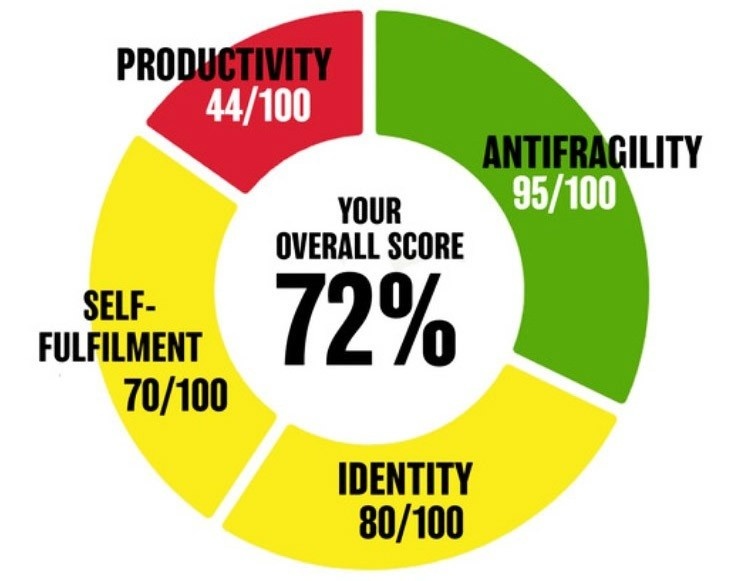SUMMARY
- This episode covers eight ways you can become more decisive. Decision fatigue can affect anyone, and making tons of decisions every day is quite exhausting. You need to make faster, fewer and better decisions. Importantly becoming more decisive is learnable.
- Firstly, don’t sit on things. Parkinson’s Law states that work will fill the space that it’s given and that works for decision making too. Don’t wait for weeks to make a decision if it can be done in days.
- That brings us to point number two: Systematize. Create checklists, a framework, or any system that will lessen redundancies and make decision-making easy.
- Number three, simplify. A one-pager containing all key information might be all you need. It also keeps all complex thinking into a single accessible framework.
- Fourth is to let others choose for you. When you’re running a team, avoiding micromanagement and encouraging autonomy will free you up, so you can focus on more important decisions.
- Number five, look back on previous decisions you’ve made. Try to replicate the conditions that led to winning decisions, while also identifying obstacles that previously came up as well.
- Number six is to look at what other people are doing who are facing the same decision. You might see approaches you haven’t thought of previously.
- Number seven, look forward. What are the trends going on in your industry? What are the factors that should influence your decision?
- Last but not least, stay healthy. Being fit, and especially having enough sleep, has been proven to lead to much better decisions.
TRANSCRIPT
Making tons of decisions on a day in and day out basis can be exhausting. We can all get decision fatigue. But the truth is, you need to be making faster, fewer and better decisions if you’re going to be getting to where you want to with your business, your life. The great thing is it’s all learnable. You can learn how to become more decisive and today, I want to teach you eight ways in which you can do that.
Hi, I’m Eric Partaker, and I coach CEOs, entrepreneurs, leaders and individuals in performing at a higher level, reaching that peak performance in their business and their life. And I’m really excited today to talk about the power of decisiveness and how, with eight simple techniques, or frames, or ways of thinking, you can, as I said, improve your ability to make faster, better and even fewer decisions.
Number one, don’t sit on things. I know that sounds simple, but I can’t tell you how many times, in my past, in the various businesses that I’ve run and led, that I’ve realized that I’ve just been sitting on a decision. I’ve been taking way too long to make it. And you have to constantly challenge yourself to actually push further ahead faster. Don’t sit on that decision if you don’t need to.
If you’ve heard of Parkinson’s Law, Parkinson’s Law simply states that, “Work will fill the space that it’s given.” And that works for decision making too. So if you’re going to sit there and give yourself weeks to make a decision that could be done in days, not only will you have all of this decision fatigue going on in your mind because you’re constantly thinking about this decision over and over and over again, but it also hurts your leadership, it also hurts your management ability, it also hurts the progress of that you’re going to stand to make against your goals or the performance of your company.
Because everyone is sitting around, including you, idle. They’re waiting for that decision. It may be you waiting out on that decision for yourself or your team waiting for you. So don’t sit on things. Remember Parkinson’s law and go ahead and make those decisions faster.
Number two, we need to systematize. What do I mean by systematize? Never make the same decision twice. The moment you find that, that, that you’re making a decision again, the moment that you think to yourself, hang on, we’ve already done this, wonderful, that’s an opportunity for you to be doing one of two things, or maybe a combination. One, you can be maybe delegating that decision to someone else and asking them to follow the same set of procedures or actions that you use to reach a decision the previous time around.
Or, number two, you could be creating a checklist that makes that decision easier. I’ll give you a very, very quick example. Recently, I ran a virtual event, and as part of that virtual event, we had to come up with a series of activities that we’re doing pre-launch. Each of those activities required some thinking in decision-making. But what I did was I turned those activities into a very simple checklist.
This included everything from what emails to be sending when, what’s the title of those emails, what changes to be making to the website. And also things like, when we got set up on the day for the virtual event, what’s the checklist, what are the activities that we need to be going through on Zoom to confirm that we’re ready for launch and ready to be inviting those first people into the event?
Now that myriad of activities, all of those things, could have occupied a ton of my time. And we could have made mistakes, had we not use simple checklist, or a framework, or a systemization, to make that decision-making easy.
Number three, make the complex simple. In the various leadership positions I’ve held, people would come to me with recommendations or proposals. And it would require me to do a lot of thinking, a lot of decision-making on whatever it was that they were suggesting. But then I started to systematize things with a simple one-pager. Where I was requiring those coming to me to give me the background information, the rationale for whatever the recommendation was, the resources that were going to be needed, as well as the financial impact.
That was saving me a lot of time in the decision-making, because I had translated all that complex thinking, all that complex decision-making, into a simple framework that people were using to present whatever it was that they wanted a decision on. And then with that in place, I had all the information that I needed and I was able to make. As we captioned this whole episode, I was able to make better, fewer and faster decisions.
Number four, let others choose for you. Now, if you’re running a team, or a group, or you’re in a leadership position, often that’s a great time to simultaneously develop the autonomy of the team while also requiring less decision-making from you.
A lot of times, as leaders and managers, we feel that we need to be micromanaging or we… Well, maybe we don’t feel like we need to be micromanaging. But let me put it another way, we get so involved in the decision-making at all levels that it can come across as we’re micromanaging. That’s really bad because that takes away people’s autonomy, and it makes them less likely to want to continue working for you, with you, in that team. Because people want that chance to express their own authority.
And this is a double benefit. Because by pushing decisions down to the team, you can define, say, what you want to achieve, but have the team help you decide how we’re going to do it, let them make those decisions. And by doing that, you’re, once again, going to be taking some of the decision-making responsibility and burden off a view, extending it to the team. But even more importantly, from the team’s point of view, you’re going to be developing their autonomy, their own management and leadership abilities as they are now being forced to make those decisions themselves.
Number five, look back. What I mean is look at what achieved. Look at the decisions that you’ve made. And what I like to do is separate decisions that I’ve made into two camps categories, which were the wins and which were the learn. Notice, I didn’t say fail there. Because I want to constantly be looking at failures, even with regards to decision making, as learning opportunities.
So, the wins are easy in a way because just look at, well, what decisions went well and what were the conditions that enable those decisions to go well? And then I seek to replicate that conditions in future decision-making exercises. This is also incredibly powerful thing to do with a team. Because is usually, with a team, you typically focus on the things that haven’t gone well.
And what people don’t do enough of when it comes to decision-making especially, is looking to replicate past success. So imagine the power of sitting down with your group of peers or with a team and saying, “Hey, that decision went super well, why did it go well?” And getting everyone’s input in that room, and then translating that perhaps into a framework or a tool that you can use to preemptively ensure that future decisions are modeling the same conditions that are likely to it enable good, strong decision-making.
On the learn front though, we have to look at, well, what didn’t go well and what were the obstacles that came up. And then again, how could we mitigate any of that in the future to improve decision-making going forward. So looking back is, once again, looking at what went well and also what didn’t. And to the extent that you’re able to involve in the team, or peers, or others, or even your superiors, in rounding out that picture.
Number six, look around. So we just said look back, now we’re saying look around what are other people doing who are facing the same decision. And here’s an especially important thing that I want you to look for. I purposely want you to look for contrarian approaches. Approaches that seem completely opposite to how you would go about making the decision. Why? Because it’s very easy for us to unknowingly become trapped in our same way of thinking, our same way of approaching decisions, our same way of evaluating whether or not something is good or bad.
And by looking at contrarian or approaches that we would never have thought of ourselves, or perhaps that we look at as a bit crazy, or nuts, why are they doing that, it opens up our thinking, it expands our opportunity.
Of course, you shouldn’t just look for contrarian approaches, you should also be just looking for what’s-best practice. So what are some of the top people doing out there, how are they approaching it, how are they making the decisions and how can that influence your decision-making?
Number seven. Winding back, we just said look back, we said look around. Our number seven, look forward. So what are the trends going on, maybe in your industry? What are the things that you need to be wary of from a personal point of view? Are you taking into account all of those factors? And how does that influence your decision-making.
And number eight, the final way that you can help yourself make fewer, better and faster decisions, and also help others. It’s going to sound really simple, but simple does it. Stay fit and rested. When we are healthy, when we have enough sleep, it is proven that we make better decisions. It is proven that we make decisions faster. It’s proven that we also realize we can make fewer decisions.
I




